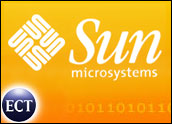
With a flurry of product announcements,IBM and SunMicrosystems have intensified theirheated battle to dominate the Web services market.
In this round, the two behemoths are targeting the developer community, with Sun takingthe wraps off of its Sun Open Net Environment Application Services Reference Architectureand IBM unveiling a WebSphere SoftwareDevelopers Kit.
Web services is seen as a fast-growing market that could deliver impressive spoils — inwhat could be a US$5.4 billion market — to the victor.
Next Big Thing
“Web services is the expected next big thing,” Joseph Feiman, vice president andresearch director at Gartner, told theE-Commerce Times. And with good reason.
Web services can save the enterprise considerable dollars and can make operations moreefficient. According to Gartner, for example, Web services will drive a 30 percentincrease in the efficiency of IT development projects.
Still, Web services providers must tread lightly because the sector issensitive to economic decline. In May, companies providing Web services were among thehardest-hit by layoffs, according to areport from outplacement firm Challenger, Gray &Christmas.
Everyone In the Ring
With so much at stake, it seems that nearly every vendor is jumping into the Web servicesmarket in some way — from J.D.Edwards and SAPto IBM, Sun and Microsoft.
While Sun and IBM have banded together to fight Microsoft’s assault on the sector, thetwo companies also have remained bitter enemies in their own right. The latest volleyplaces Web services developers squarely in the crosshairs.
It is one thing to talk about Web services, but the challenge for vendors becomes, “Howdo you put [your tools] into developers’ hands?” YankeeGroup senior analyst Rob Perry told the E-Commerce Times.
Aimed at Big Guys
The Sun One Application Services Reference Architecture aims to help developers satisfythe needs of Fortune 500 companies by offering Sun OneApplication Server and theSolaris operating system, along with other Sun software.
The architecture was built to help customers upgrade as an organization’s needs grow.The approach was designed by the company’s Sun One engineers in conjunction with thecompany’s Professional Services group and the iForce Ready Center.
The team built on the company’s Business Ready Infrastructure (BRI) in an effort to helpcustomers remain flexible and respond quickly to changes.
Gary Beck, vice president of the Integrated Products Group at Sun Microsystems, claimedthat the company has “eliminated the guesswork and risk on our customers’ side” with itsholistic approach. He noted that Sun works with customers in the iForce Ready Centers totest its products and ensure that no surprises or extra costs will crop up during theimplementation process.
IBM Fires Back
IBM answered with a WebSphere Software Developer Kit to aid Linux and Windows developersin building Web services. The kit works on the company’s successful WebSphere platformand includes an application server, database and online directory.
Perry called the offerings “a logical extension of their development tools. IBM hashad a lot of stuff in this space, and Sun has been rolling out development tools for awhile,” he added.
He noted that “IBM has had a very logical and progressive strategy” in the Web servicesarena, but that Sun was a bit later to the game and is “playing catch-up.”
Attributing Sun’s woes primarily to waffling over what to do with iPlanet, Perry notedthat the Java king initially did not putits weight behind the Web ServicesInteroperability (WS-I) Organization, a consortium created to ensure compatibility amongWeb services.
“Now Sun is trying to get in on it,” said Perry, “and that is presenting a problem.”














































Social Media
See all Social Media